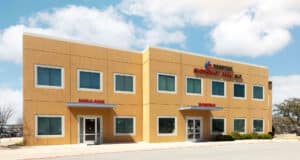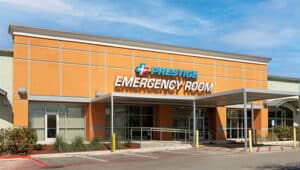San Antonio Fracture Emergency Care
Physicians in San AntonioFractures require immediate bone fracture treatment to avoid more serious damage to bones and surrounding soft tissues including blood vessels and nerves. At Prestige Emergency Room in San Antonio, TX, patients receive prompt fracture treatment and care to relieve symptoms and to prevent more significant damage from occurring.
Emergency Fracture Physicians in San Antonio
Nearly all fractures cause significant pain, but they can cause other symptoms depending on the location, type, and severity of the break. Common symptoms of fractures include:
- Hard lumps or bumps at the site of injury
- Swelling and tenderness near the injury
- Pain when bearing weight or moving the injured limb or joint
- Limited range of motion
- Nerve-related symptoms like tingling or numbness
Severe fractures can cause the limb or joint to bend at an odd angle, and compound fractures result in the bone puncturing the skin.
What kinds of fractures are there?
Most fractures are caused by trauma like car accidents or falls, or repeated force for stress fractures, but some fractures can occur as a result of osteoporosis (“brittle bones”) or other metabolic disorders. Common types of fractures include:
- Stable fractures where the ends of the bones remain “lined up” and in place
- Open or compound fracture where the skin is pierced, exposing the bone and soft tissue to the risk of infection
- Transverse fracture that causes a horizontal fracture line
- Oblique fracture that results in an angled break
- Comminuted fracture where the bone shatters into several pieces
How can I tell if I have a fracture or a sprain?
Fractures typically are associated with much more severe pain and instability in the joint or limb. However, patients should not test the strength or an injured limb or joint on their own. Any type of limb or joint pain resulting from an injury should be evaluated by a doctor to determine if a fracture is present so bone fracture treatment can begin.
How are fractures treated?
The methods used in fracture treatment can differ widely depending on the type and location of the fracture, as well as the overall health of the patient. Most fractures are treated by first ensuring the ends of the bone line up properly and then applying a cast. Fractures that do not line up need to be reduced – manipulated to bring the ends of the bones into alignment. Fractures with multiple “parts” will need surgery to bring the fragments together and secure them with pins or screws.












